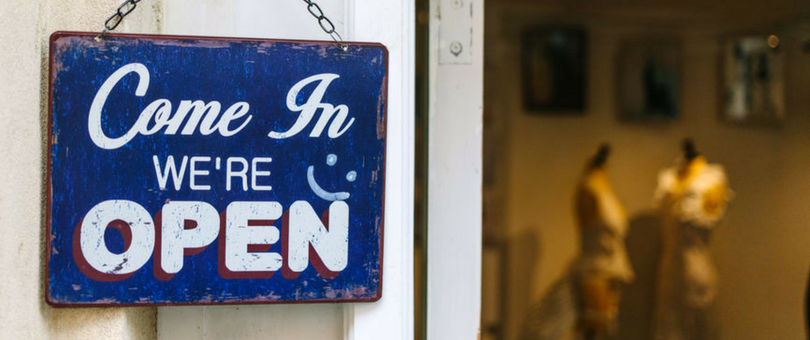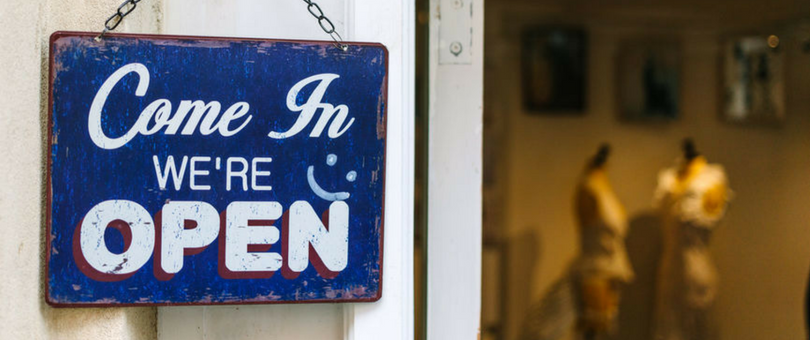 By now, you may know that pop-up shops are a great way to try selling offline and connect with customers one-on-one. There are many reasons to consider trying a pop-up shop and plenty of pop-up shop ideas to inspire you as you start planning your own.
By now, you may know that pop-up shops are a great way to try selling offline and connect with customers one-on-one. There are many reasons to consider trying a pop-up shop and plenty of pop-up shop ideas to inspire you as you start planning your own.
But what’s next in your pop-up journey?
Here, we’ll look at some of the practicalities around doing a pop-up shop and outline some next steps to help you turn your physical retail dream into a reality. Namely, we’ll tackle how to find a pop up rental — the blank canvas where you’ll translate your brand identity into a physical space.
In fact, hunting for pop up rental is really like looking for any new space; think back to the last time you were looking for an apartment or house and add a few commercial goals into the mix and you’ll get a clearer sense of the task ahead.
Let’s say you’ve got a good handle on your goals for your pop-up shop. You’ve got a checklist of things to look for while scouting locations. But before finalizing the right space for your upcoming pop up, there are a few details you’ll need to consider.
Here are the questions you need to ask before you make up your mind, and a few things to watch out for when searching for the perfect store for rent.
Store for Rent: Get Your Questions Answered

It’s important to demonstrate to property managers and real estate agents that you’ve done your homework. Once you get them on the phone or drop in to see them in person, you should have the following questions ready to ask to get a complete understanding of what you’re getting into:
1) What is the Rental Cost?
Based on your own unique timeline, you’ll probably want to get a daily, weekly, or monthly rate depending on the type of space and how long you plan to be there. Get the specifics for any store for rent that’s piqued your interest so you can weigh your options.
2) What’s Included in the Rental Cost?
This is where you’ll want to drill down on what you’re getting for your money and get specific on things like square footage, amenities, and occupancy dates.
3) Are There Any Additional Utility Costs?
If so, clarify upfront what they are and how they’re being split up. Ensure you determine what extra costs you’re responsible for and whether they’re reasonable. Utility costs for a pop up rental can sneak up on you and can be a major expense if you weren’t expecting it from the outset.
4) What is the Layout of the Space?
You’ll want to have a good grasp on this to start visualizing what the final space could look like. Does your ideal layout work in a particular storefront? Will you have enough space to create a path for customers to follow, set up visual merchandising displays, and have a checkout counter?
To help you visualize your pop-up shop in a space, sketch out where everything will go and how you’ll lay out your store.
FURTHER READING: Learn more about setting up your shop with our ultimate guide to retail store layouts.
5) What are the Specific Dimensions of the Storefront (i.e. Ceiling, Windows, Doors, Counters, and Pillars)?
Not only will this be handy when you start designing your displays or printing signage, but it’ll give you a sense of how much or how little you’ll need to dress up the space.
6) Can the Storefront be Modified?
This essentially boils down to how much control you have over the space itself. Obviously, if it’s a gallery and you’re sharing with multiple vendors, don’t expect to be able to drill holes into the wall or make significant changes to the pop up rental.
Regardless, make sure to determine the landlord’s do’s and don’ts and whether they’ll work for you.
7) Who is Liable For What?
Owners will typically attempt to limit their liabilities when it comes to unforeseen or unfortunate circumstances, so you’ll want to read the fine print in your lease. If something happens, like a fire or a plumbing issue, it’s better to know ahead of time instead of disputing or creating a claim down the road.
8) Is There Internet or WiFi Access?
You’ll need an Internet connection to process transactions and accept credit card payments, which makes this a pretty big necessity.
Whether you need WiFi to run Shopify POS or a mobile card reader, make sure to have this necessity covered. WiFi access is also a great amenity for your customers and one of a handful of ways you can make your store more mobile friendly.
9) Will You Need Insurance?
Getting property insurance is often a prerequisite when signing a lease agreement. This kind of insurance covers any number of things that could go wrong, including but not limited to theft, venue or glass repairs, merchandise damage, and more.
10) What is the Deposit Required to Secure the Storefront?
Typically, if you’re planning a longer-term pop-up shop lasting 2-3 months, the pop up rental deposit is often equivalent to a month’s rent.
For shorter timelines, you’re probably expected to at least put down a third of the total rent payment. But again, it varies, so make sure to clarify before signing on the dotted line.
11) What is the Average Foot Traffic You Can Expect?
Even though you’ll most likely want to see this for yourself (you can always stake out the neighborhood or ask nearby shop owners), the property owner sometimes has average foot traffic numbers on hand. This becomes even more pertinent if you’re getting a booth at a tradeshow.
FURTHER READING: Have flagging foot traffic? Learn more about how to accurately measure and boost foot traffic to your store.
Once you’ve got these questions out of the way, you’ll want to figure out whether you’ll be signing a lease, obtaining a license, or applying for a permit to get your pop-up shop moving forward.
Storefront for Rent: Leases, Licenses, and Permits

Lease
Under a lease, the person using the storefront for rent is considered a tenant and given exclusive possession for the time both parties agree to — otherwise known as the “term” of the lease. The term will also include what you’ll be able to do the space when it comes to modifications, hours of operation, and several of the other key aspects discussed above, including rent, utilities, and more.
FURTHER READING: Not all lease terms are set in stone. Read our guide on how to negotiate a business lease.
License
Depending on your geography and the length of your pop-up shop, you may need a license rather than a lease. A license gives you, the licensee, the legal authority to use the landlord’s asset. Without a license, using the property would be unlawful.
These are generally given out for short-term occupants but comes with generally a more limited arrangement and sometimes does not guarantee exclusive use of the property.
Permits
Each region will have its own regulations, so based on what you’re intending to do with your pop up rental, you’ll want to make sure you’re within the bounds of the law.
For example, many cities require you to have a permit to sell food and alcohol. So, if you plan to serve champagne at your pop-up shop opening, you’ll need to secure the appropriate permit.
To ensure you’re set for your pop-up shop opening, check with your real estate agent, landlord, and/or the city for more details on the permits you’ll need.
Store for Rent: What’s Next for Your Pop Up Rental?
Once you’ve done your homework and assessed whether a potential pop up rental is a good fit or not, most likely, the next step is to actually go out and see the place in-person during the hours the pop-up will operate.
Make sure to do this multiple times throughout the week at different times of the day. From there, once you’ve got your mind made, request to see the lease agreement.
But before you sign anything, take a few days to thoroughly review the agreement, or have a legal professional take a look to mitigate liabilities and make sure there aren’t any red flags. If the price is right, the agreement works with your specifications, and the location is ideal for your goals, then you’ll want to put down the initial deposit to secure the venue and start planning how you’re going to make the pop-up a success.
That means you’ll need to consider how the pop-up will communicate your brand story, what the interior will look like, what kind of signage you’ll need, and how you can dress up your windows to get the attention of passersby.

